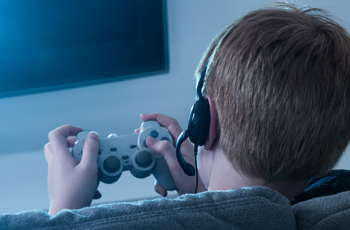
It is becoming more prevalent: increasing numbers of children and adolescents with what can only be best described as a digital addiction. A trend fueled by increased exposure to the ever-present electronic gadgets that exist today.
This troubling trend became personal a few years ago when my then-four-year-old son threw a 30-minute, out-of-control tantrum because he wasn't allowed access to the iPad to "feed his baby dragons." My concern grew when my seven-year-old son finally earned access to Minecraft for the first time, and, on the second night of having such access, slipped out of bed and proceeded to play Minecraft quietly in the laundry room for almost two hours before I realized that he was, in fact, not in bed. These are behaviors born from a burgeoning addiction.
In recent years, I worked with a fifteen year-old who played video games over 80 hours each week (yes, it is difficult to do well in school simultaneously) and who literally beat up his 85-year-old grandmother when she tried to make him stop playing for dinner. He was in the habit of not eating because it disrupted his gaming time.
It would take several hands for me to count the number of kids I work with who have IQs over 130 but are failing all of their classes because they cannot control their electronics addiction. Additionally, I work with a myriad of kids who are sleep-deprived due to texting friends all hours of the night. The acronym FOMO stands for "fear of missing out" and describes the condition many of our youth have today that drives them to avail themselves electronically to the outside world at all times. (Heaven forbid, a friend should text me and I don't respond within 20 seconds.) Research has shown that individuals with FOMO have significantly increased levels of anxiety just minutes after losing access to their cellphones.
So, what's to be done to stem the tide of this growing addiction? The answer starts with you, the parent.
- First, adhere to the new guidelines recently set forth by the American Academy of Pediatrics of no screen time before age two and less than one hour daily for children up to age six.
- For children over six and adolescents, screen time should be a minor, reasonable fraction of the time left after school, homework, social events, sleep and at least one hour of daily physical activity.
- Of course it is also imperative to monitor electronics use closely to ensure cyberbullying, sexting, accessing pornographic sites, and making oneself accessible to online predators is not occurring.
- Access to any electronics device given to children and adolescents should come with the understanding that they can expect that you—the parent—will be monitoring the use of the device; and that the device may be taken away at any time, indefinitely, if not used properly.
- Electronic devices should not used during homework (unless for schoolwork, of course), meals and within one or two hours of bedtime.
- Designate a few days weekly as "electronics-free" days.
Most importantly, if the use of electronics appears to become too important to your kids, don't feel like you're being a bad parent if you "pull the plug" on the electronics for a while. If the thought of going without electronics for just a day results in your child throwing a major tantrum, getting violent or destructive, or threatening physical harm to self or others, you should be concerned that your child is on the path to an electronics addiction. Don't be afraid to take immediate and perhaps seemingly drastic measures, like putting them all aside for even a week or more at a time, and remember, preventing addiction is far easier than overcoming addiction.
Dr. Michael Jansen, PhD, LP
Holland Hospital Behavioral Health Services
Child and Adolescent Psychologist